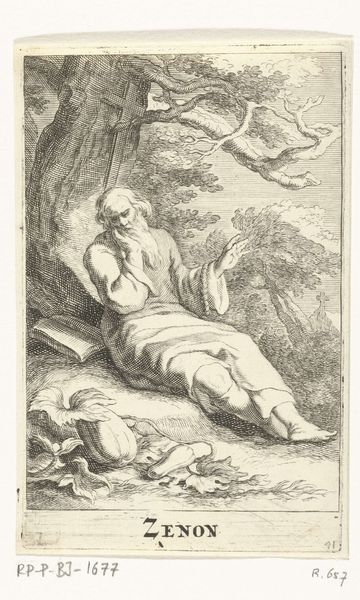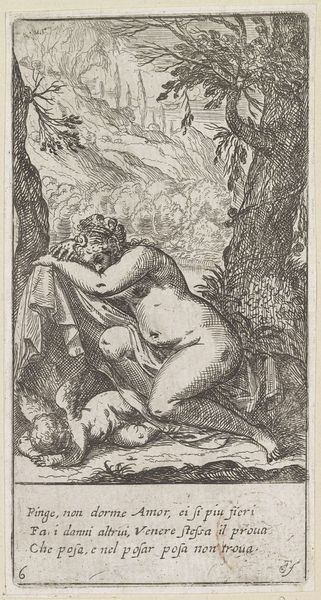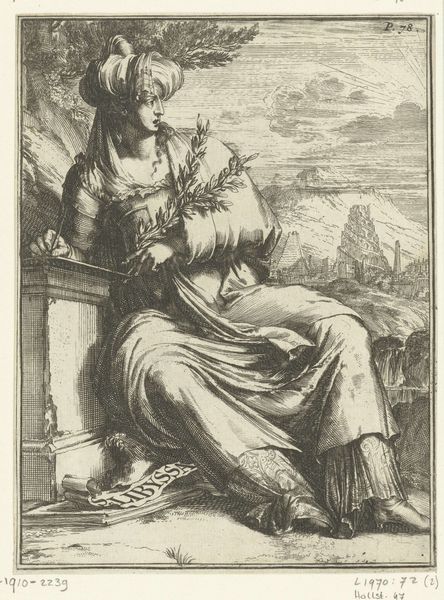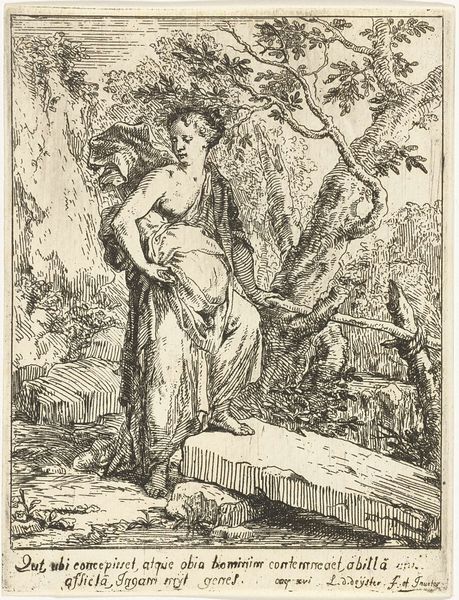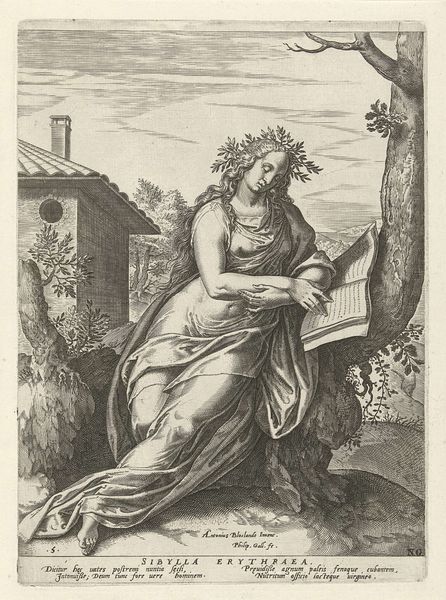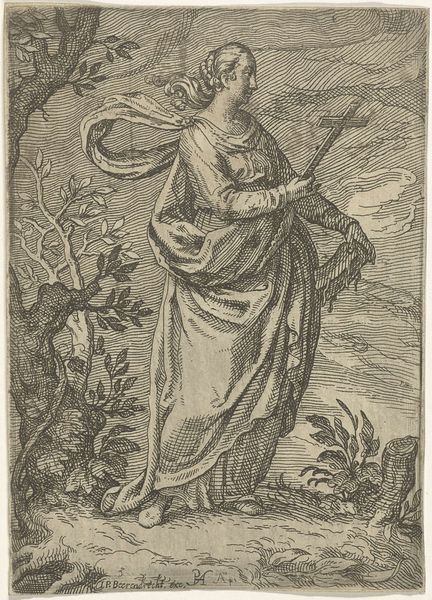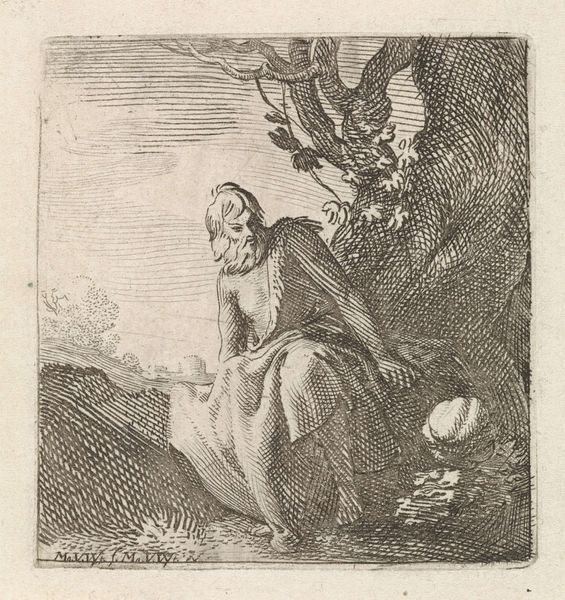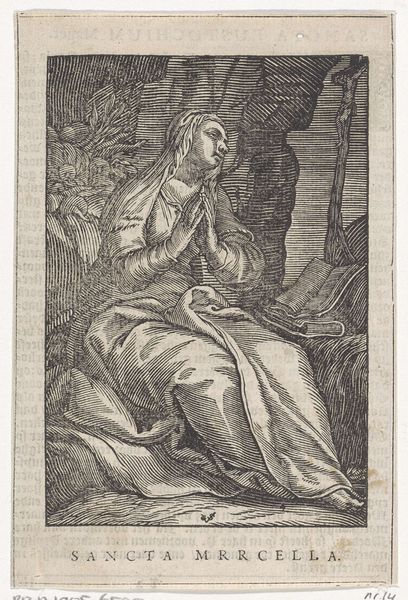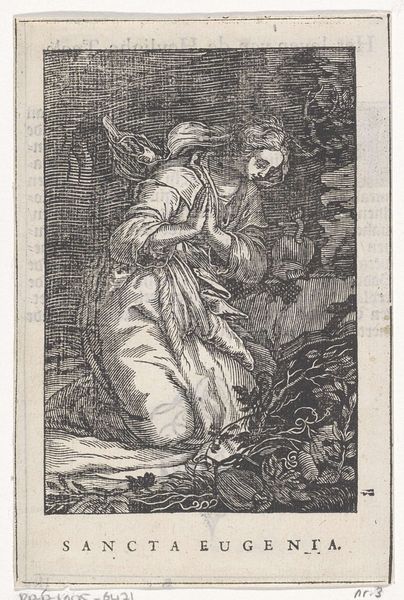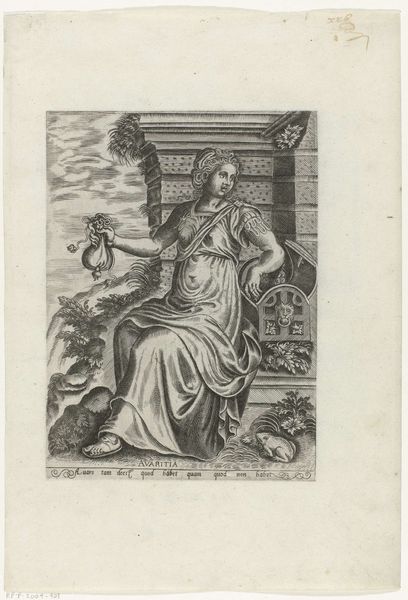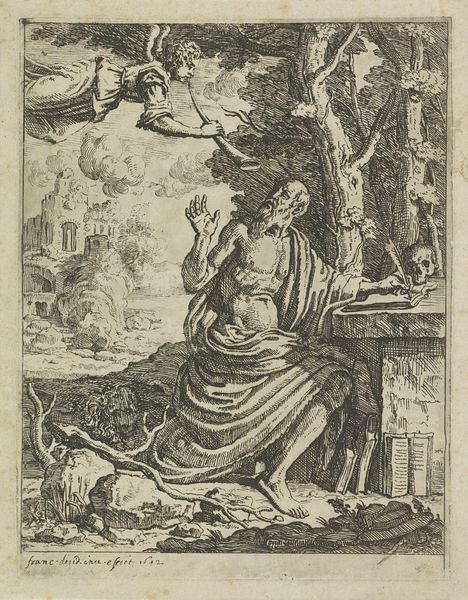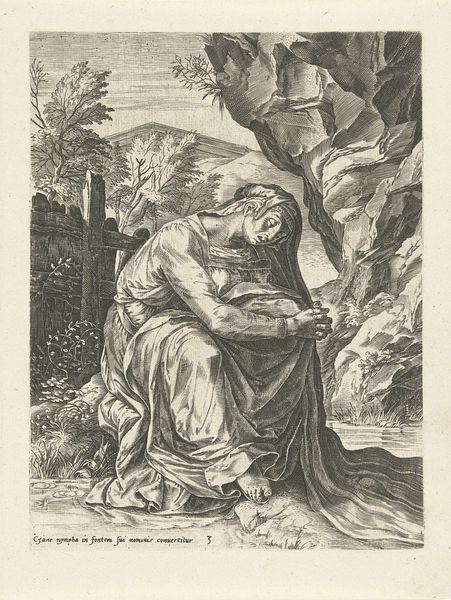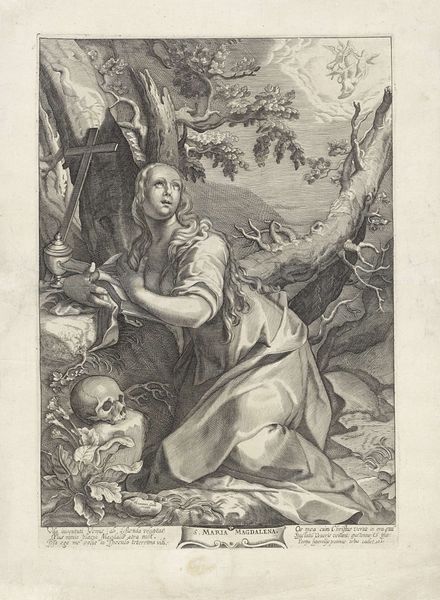
drawing, etching, ink
#
drawing
#
narrative-art
#
baroque
#
pen drawing
#
etching
#
figuration
#
ink
#
history-painting
Dimensions: height 156 mm, width 141 mm
Copyright: Rijks Museum: Open Domain
Jan Lievens created this print of Saint John on Patmos using etching, a printmaking technique that democratized image production in the 17th century. The artist would have covered a metal plate with a waxy ground, then scratched his composition into it with a needle, exposing the metal underneath. The plate was then submerged in acid, which bit into the exposed lines, creating grooves. Finally, ink was applied to the plate, filling the etched lines, and the image was transferred to paper under pressure. Lievens’s skill is evident in the dynamic, almost frantic, network of lines, which animate the figure and landscape. But the very nature of the etching process – repeatable, relatively quick, and accessible – meant that prints like these were not considered "high art" in their time. They were seen as a form of reproduction, useful for disseminating images widely, rather than as original artistic creations. Today, we can appreciate Lievens's technical virtuosity and the way the etching process itself contributes to the image's expressive energy, blurring the lines between craft and fine art.
Comments
No comments
Be the first to comment and join the conversation on the ultimate creative platform.
